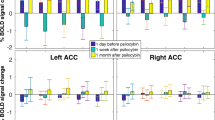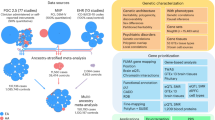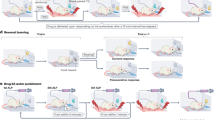Abstract
Regulating social emotional actions is essential for coping with life stressors and is associated with control by the anterior prefrontal cortex (aPFC) over the amygdala. However, it remains unclear to what extent prefrontal emotion regulation capacities contribute to resilience against developing post-traumatic stress disorder (PTSD) symptoms. Here, 185 police recruits who experienced their core trauma in the line of duty participated in a prospective longitudinal study. Pre- and post-trauma, they performed a well-established functional magnetic resonance imaging (fMRI) approach–avoidance task, mapping impulsive and controlled emotional actions. Higher baseline aPFC, dorsal and medial frontal pole activity was related to lower PTSD symptoms after trauma exposure. aPFC activity predicted symptom development over and above self-reported and behavioural measures. Trauma exposure, but not trauma symptoms, predicted amygdala activation at follow-up. These findings suggest that prefrontal emotion regulation activity predicts increased resilience against developing post-traumatic stress symptoms and may provide fruitful starting points for prediction and intervention studies.
This is a preview of subscription content, access via your institution
Access options
Access Nature and 54 other Nature Portfolio journals
Get Nature+, our best-value online-access subscription
$29.99 / 30 days
cancel any time
Subscribe to this journal
Receive 12 digital issues and online access to articles
$119.00 per year
only $9.92 per issue
Buy this article
- Purchase on Springer Link
- Instant access to full article PDF
Prices may be subject to local taxes which are calculated during checkout




Similar content being viewed by others
Data availability
The data that support the findings of this study are available from the corresponding author upon reasonable request.
Code availability
The computer code that supports the findings of this study is available from the corresponding author upon reasonable request.
References
Liberzon, I. & Abelson, J. L. Context processing and the neurobiology of post-traumatic stress disorder. Neuron 92, 14–30 (2016).
Rabinak, C. A. et al. Focal and aberrant prefrontal engagement during emotion regulation in veterans with posttraumatic stress disorder. Depress. Anxiety 31, 851–861 (2014).
Fitzgerald, J. M., Digangi, J. A. & Phan, K. L. Functional neuroanatomy of emotion and its regulation in PTSD. Harv. Rev. Psychiatry 26, 116–128 (2018).
Kalisch, R. et al. The resilience framework as a strategy to combat stress-related disorders. Nat. Hum. Behav. 1, 784–790 (2017).
Admon, R., Milad, M. R. & Hendler, T. A causal model of post-traumatic stress disorder: disentangling predisposed from acquired neural abnormalities. Trends Cogn. Sci. 17, 337–347 (2013).
de Vries, G.-J. & Olff, M. The lifetime prevalence of traumatic events and posttraumatic stress disorder in the Netherlands. J. Trauma. Stress 22, 259–267 (2009).
Lanius, R. A., Frewen, P. A., Vermetten, E. & Yehuda, R. Fear conditioning and early life vulnerabilities: two distinct pathways of emotional dysregulation and brain dysfunction in PTSD. Eur. J. Psychotraumatol. 1, 5467 (2010).
Ehlers, A. et al. Heart rate responses to standardized trauma-related pictures in acute posttraumatic stress disorder. Int. J. Psychophysiol. 78, 27–34 (2010).
Hayes, J. P., Hayes, S. M. & Mikedis, A. M. Quantitative meta-analysis of neural activity in posttraumatic stress disorder. Biol. Mood Anxiety Disord. 2, 1–13 (2012).
Patel, R., Spreng, R. N., Shin, L. M. & Girard, T. A. Neurocircuitry models of posttraumatic stress disorder and beyond: a meta-analysis of functional neuroimaging studies. Neurosci. Biobehav. Rev. 36, 2130–2142 (2012).
Michopoulos, V., Norrholm, S. D. & Jovanovic, T. Diagnostic biomarkers for posttraumatic stress disorder: promising horizons from translational neuroscience research. Biol. Psychiatry 78, 344–353 (2015).
Etkin, A. & Wager, T. D. Functional neuroimaging of anxiety: a meta-analysis of emotional processing in PTSD, social anxiety disorder, and specific phobia. Am. J. Psychiatry 164, 1476–1488 (2007).
Pitman, R. K. et al. Biological studies of post-traumatic stress disorder. Nat. Rev. Neurosci. 13, 769–787 (2012).
Koch, S. B. J. et al. Intranasal oxytocin normalizes amygdala functional connectivity in posttraumatic stress disorder. Neuropsychopharmacology 41, 2041–2051 (2016).
Sripada, R. K. et al. Altered resting-state amygdala functional connectivity in men with posttraumatic stress disorder. J. Psychiatry Neurosci. 37, 241–249 (2012).
Rauch, S. L., Shin, L. M. & Phelps, E. A. Neurocircuitry models of posttraumatic stress disorder and extinction: human neuroimaging research-past, present, and future. Biol. Psychiatry 60, 376–382 (2006).
Jovanovic, T. & Ressler, K. J. How the neurocircuitry and genetics of fear inhibition may inform our understanding of PTSD. Am. J. Psychiatry 167, 648–662 (2010).
Volman, I., Toni, I., Verhagen, L. & Roelofs, K. Endogenous testosterone modulates prefrontal–amygdala connectivity during social emotional behavior. Cereb. Cortex 21, 2282–2290 (2011).
Volman, I. et al. Reduced serotonin transporter availability decreases prefrontal control of the amygdala. J. Neurosci. 33, 8974–8979 (2013).
Radke, S. et al. Testosterone biases the amygdala toward social threat approach. Sci. Adv. 1, e1400074–e1400074 (2015).
Bertsch, K. et al. Neural correlates of emotional action control in angerprone women with borderline personality disorder. J. Psychiatry Neurosci. 43, 161–170 (2018).
LeDoux, J. E., Moscarello, J., Sears, R. & Campese, V. The birth, death and resurrection of avoidance: a reconceptualization of a troubled paradigm. Mol. Psychiatry 22, 24–36 (2017).
American Psychiatric Association. Diagnostic and statistical manual of mental disorders. (American Psychiatric Publishing, 2013).
Neubert, F. X., Mars, R. B., Thomas, A. G., Sallet, J. & Rushworth, M. F. S. Comparison of human ventral frontal cortex areas for cognitive control and language with areas in monkey frontal cortex. Neuron 81, 700–713 (2014).
Ramnani, N. & Owen, A. M. Anterior prefrontal cortex: insights into function from anatomy and neuroimaging. Nat. Rev. Neurosci. 5, 184–194 (2004).
Bramson, B. et al. Human lateral frontal pole contributes to control over emotional approach–avoidance actions. J. Neurosci. 40, 2925–2934 (2020).
Folloni, D. et al. Dichotomous organization of amygdala/temporal-prefrontal bundles in both humans and monkeys. Elife 8, 1–23 (2019).
Kalisch, R. The functional neuroanatomy of reappraisal: time matters. Neurosci. Biobehav. Rev. 33, 1215–1226 (2009).
Morawetz, C., Bode, S., Derntl, B. & Heekeren, H. R. The effect of strategies, goals and stimulus material on the neural mechanisms of emotion regulation: a meta-analysis of fMRI studies. Neurosci. Biobehav. Rev. 72, 111–128 (2017).
Koch, S. B. J., Mars, R. B., Toni, I. & Roelofs, K. Emotional control, reappraised. Neurosci. Biobehav. Rev. 95, 528–534 (2018).
Lanius, R. A. et al. Functional connectivity of dissociative responses in posttraumatic stress disorder: a functional magnetic resonance imaging investigation. Biol. Psychiatry 57, 873–884 (2005).
Morey, R. A., Petty, C. M., Cooper, D. A., LaBar, K. S. & McCarthy, G. Neural systems for executive and emotional processing are modulated by symptoms of posttraumatic stress disorder in Iraq War veterans. Psychiatry Res. Neuroimaging 162, 59–72 (2008).
Sun, D. et al. Brain structural covariance network topology in remitted posttraumatic stress disorder. Front. Psychiatry 9, 1–10 (2018).
Sadeh, N. et al. Neurobiological indicators of disinhibition in posttraumatic stress disorder. Hum. Brain Mapp. 36, 3076–3086 (2015).
Sadeh, N. et al. SKA2 methylation is associated with decreased prefrontal cortical thickness and greater PTSD severity among trauma-exposed veterans. Mol. Psychiatry 21, 357–363 (2016).
Admon, R. et al. Human vulnerability to stress depends on amygdala’s predisposition and hippocampal plasticity. Proc. Natl Acad. Sci. U. S. A 106, 14120–14125 (2009).
Admon, R. et al. Imbalanced neural responsivity to risk and reward indicates stress vulnerability in humans. Cereb. Cortex 23, 28–35 (2013).
Van Wingen, G. A., Geuze, E., Vermetten, E. & Fernández, G. Perceived threat predicts the neural sequelae of combat stress. Mol. Psychiatry 16, 664–671 (2011).
Carlier, I. V. E., Lamberts, R. D. & Gersons, B. P. Risk factors for posttraumatic stress symptomatology in police officers: a prospective analysis. J. Nerv. Ment. Dis. 185, 498–506 (1997).
Koch, S. B. J. et al. The role of automatic defensive responses in the development of posttraumatic stress symptoms in police recruits: protocol of a prospective study. Eur. J. Psychotramatol. 8, 1412226 (2017).
Chen, M. & Bargh, J. A. Consequences of automatic evaluation: immediate behavioral predispositions to approach or avoid the stimulus. Personal. Soc. Psychol. Bull. 25, 215–224 (1999).
Rotteveel, M. & Phaf, R. H. Automatic affective evaluation does not automatically predispose for arm flexion and extension. Emotion 4, 156–172 (2004).
Bramson, B., Jensen, O., Toni, I. & Roelofs, K. Cortical oscillatory mechanisms supporting the control of human social–emotional actions. J. Neurosci. 38, 5739–5749 (2018).
McLaren, D. G., Ries, M. L., Xu, G. & Johnson, S. C. A generalized form of context-dependent psychophysiological interactions (gPPI): a comparison to standard approaches. Neuroimage 61, 1277–1286 (2012).
Van Wingen, G. A., Geuze, E., Vermetten, E. & Fernández, G. The neural consequences of combat stress: long-term follow-up. Mol. Psychiatry 17, 116–118 (2012).
Yehuda, R., Halligan, S. L. & Grossman, R. Childhood trauma and risk for PTSD: relationship to intergenerational effects of trauma, parental PTSD, and cortisol excretion. Dev. Psychopathol. 13, 733–753 (2001).
Tottenham, N. et al. Elevated amygdala response to faces following early deprivation. Dev. Sci. 14, 190–204 (2011).
Dannlowski, U. et al. Limbic scars: long-term consequences of childhood maltreatment revealed by functional and structural magnetic resonance imaging. Biol. Psychiatry 71, 286–293 (2012).
Yehuda, R. et al. Post-traumatic stress disorder. Nat. Rev. Dis. Prim. 1, 15057 (2015).
Volman, I. et al. Testosterone modulates altered prefrontal control of emotional actions in psychopathic offenders. eNeuro 3, 1–12 (2016).
Bertsch, K. et al. Out of control? Acting out anger is associated with deficient prefrontal emotional action control in male patients with borderline personality disorder. Neuropharmacology 156, 107463 (2019).
Kaldewaij, R. et al. Frontal control over automatic emotional action tendencies predicts acute stress responsivity. Biol. Psychiatry Cogn. Neurosci. Neuroimaging 4, 975–983 (2019).
Roelofs, K., Minelli, A., Mars, R. B., van Peer, J. & Toni, I. On the neural control of social emotional behavior. Soc. Cogn. Affect. Neurosci. 4, 50–58 (2009).
Williams, J. M. G., Mathews, A. & MacLeod, C. The emotional Stroop task and psychopathology. Psychol. Bull. 120, 3–24 (1996).
Davies, C. D., Niles, A. N., Pittig, A., Arch, J. J. & Craske, M. G. Physiological and behavioral indices of emotion dysregulation as predictors of outcome from cognitive behavioral therapy and acceptance and commitment therapy for anxiety. J. Behav. Ther. Exp. Psychiatry 46, 35–43 (2015).
Schnyder, U. et al. Psychotherapies for PTSD: what do they have in common? Eur. J. Psychotraumatol. 6, 28186 (2015).
Bryant, R. A. et al. Augmenting cognitive behaviour therapy for post-traumatic stress disorder with emotion tolerance training: a randomized controlled trial. Psychol. Med. 43, 2153–2160 (2013).
Nicholson, A. A. et al. The neurobiology of emotion regulation in posttraumatic stress disorder: amygdala downregulation via real-time fMRI neurofeedback. Hum. Brain Mapp. 38, 541–560 (2017).
Fonzo, G. A. et al. Selective effects of psychotherapy on frontopolar cortical function in PTSD. Am. J. Psychiatry 174, 1175–1184 (2017).
Klumpers, F. et al. Prefrontal mechanisms of fear reduction after threat offset. Biol. Psychiatry 68, 1031–1038 (2010).
Price, C. J. & Friston, K. J. Scanning patients with tasks they can perform. Hum. Brain Mapp. 8, 102–108 (1999).
Schönbrodt, F. D. & Perugini, M. At what sample size do correlations stabilize? J. Res. Pers. 47, 609–612 (2013).
Boeschoten, M. A. et al. Development and evaluation of the Dutch Clinician-Administered PTSD Scale for DSM-5 (CAPS-5). Eur. J. Psychotraumatol. 9, 1546085 (2018).
Weathers, F. W. et al. The PTSD checklist for DSM-5 (PCL-5). https://www.ptsd.va.gov (2013).
Kaldewaij, R. et al. High endogenous testosterone levels are associated with diminished neural emotional control in aggressive police recruits. Psychol. Sci. 30, 1161–1173 (2019).
Boeschoten, M. A., Bakker, A., Jongedijk, R. A. & Olff, M. PTSD checklist for DSM-5 – Dutch version. (Arq Psychotrauma Expert Groep, 2014).
Peter-Hagene, L. C. & Ullman, S. E. Sexual assault characteristics effects on PTSD and psychosocial mediators: a cluster analysis approach to sexual assault types. Psychol. Trauma 7, 162–170 (2015).
Carlier, I. V. E. & Gersons, B. P. R. Development of a scale for traumatic incidents in police work. Psychiatr. Fenn. 23, 59–70 (1992).
Ekman, P. & Friesen, W. V. Pictures of Facial Affect (Consulting Psychologists Press, 1976).
Matsumoto, D. & Ekman, P. Japanese and Caucasian Facial Expressions of Emotion (JACFEE) and Neutral Faces (San Francisco Department of Psychiatry of Univ. California, 1988).
Lundqvist, D., Flykt, A. & Ohman, A. The Karolinska Directed Emotional Faces (KDEF) CD ROM (Department of Clinical Neuroscience, Psychology Section, Karolinska Institutet, 1998).
Martinez, A. M. & Benavente, R. The AR Face Database. Technical Report 24 (Computer Vision Center, 1998).
Tyborowska, A., Volman, I., Smeekens, S., Toni, I. & Roelofs, K. Testosterone during puberty shifts emotional control from pulvinar to anterior prefrontal cortex. J. Neurosci. 36, 6156–6164 (2016).
Poser, B. A., Versluis, M. J., Hoogduin, J. M. & Norris, D. G. BOLD contrast sensitivity enhancement and artifact reduction with multiecho EPI: parallel-acquired inhomogeneity-desensitized fMRI. Magn. Reson. Med. 55, 1227–1235 (2006).
Nieuwhof, F. et al. Impaired dual tasking in Parkinson’s disease is associated with reduced focusing of cortico-striatal activity. Brain 140, 1384–1398 (2017).
Pruim, R. H. R. et al. ICA-AROMA: a robust ICA-based strategy for removing motion artifacts from fMRI data. Neuroimage 112, 267–277 (2015).
Lund, T. E., Nørgaard, M. D., Rostrup, E., Rowe, J. B. & Paulson, O. B. Motion or activity: their role in intra- and inter-subject variation in fMRI. Neuroimage 26, 960–964 (2005).
Verhagen, L., Grol, M. J., Dijkerman, H. C. & Toni, I. Studying visually-guided reach-to-grasp movements in an MR-environment. Neuroimage 31, S45 (2006).
Tzourio-Mazoyer, N. et al. Automated anatomical labeling of activations in SPM using a macroscopic anatomical parcellation of the MNI MRI single-subject brain. Neuroimage 15, 273–289 (2002).
Acknowledgements
The authors thank all participants for their willingness to participate in this study. The authors thank A. Smit and other personnel of the Dutch Police Academy for their valuable help with recruiting participants and facilitating this study. The authors gratefully acknowledge contributions of I. Kersten, T. Döpp, N. de Valk, L. Bovy and L. Nuijen in participant recruitment and data acquisition, N. Garaux in assistance with data analysis and V. van Ast for her help with setting up the study. This study was funded by the Netherlands Organization for Scientific Research (NWO VICI-grant 453-12-0010) and a starting grant from the European Research Council (StG2012 313749), both awarded to K.R. The funders had no role in study design, data collection and analysis, decision to publish or preparation of the manuscript.
Author information
Authors and Affiliations
Contributions
R.K., M.M.H., W.Z., S.B.J.K, F.K. and K.R. contributed to the study design. R.K., W.Z. and M.M.H. conducted the experiment. R.K. performed data analysis. R.K., S.B.J.K. and K.R. drafted the manuscript. R.K., M.M.H., W.Z., S.B.J.K, F.K. and K.R. edited the manuscript and approved the final version of the manuscript for submission.
Corresponding author
Ethics declarations
Competing interests
The authors declare no competing interests
Additional information
Peer review information Nature Human Behaviour thanks Talma Hendler and the other, anonymous, reviewer(s) for their contribution to the peer review of this work. Primary Handling Editor: Jamie Horder
Publisher’s note Springer Nature remains neutral with regard to jurisdictional claims in published maps and institutional affiliations.
Supplementary information
Supplementary Information
Supplementary Results, Supplementary Figs. 1–4 and Supplementary Tables 1 and 2.
Rights and permissions
About this article
Cite this article
Kaldewaij, R., Koch, S.B.J., Hashemi, M.M. et al. Anterior prefrontal brain activity during emotion control predicts resilience to post-traumatic stress symptoms. Nat Hum Behav 5, 1055–1064 (2021). https://doi.org/10.1038/s41562-021-01055-2
Received:
Accepted:
Published:
Issue Date:
DOI: https://doi.org/10.1038/s41562-021-01055-2
This article is cited by
-
Aerobic exercise promotes emotion regulation: a narrative review
Experimental Brain Research (2024)
-
Anxious individuals shift emotion control from lateral frontal pole to dorsolateral prefrontal cortex
Nature Communications (2023)
-
Rare-earth Nanomaterials for Potential Brain Disease Theranostics
Chemical Research in Chinese Universities (2023)
-
Acute-stress-induced change in salience network coupling prospectively predicts post-trauma symptom development
Translational Psychiatry (2022)
-
Neuroimaging correlates and predictors of response to repeated-dose intravenous ketamine in PTSD: preliminary evidence
Neuropsychopharmacology (2021)



